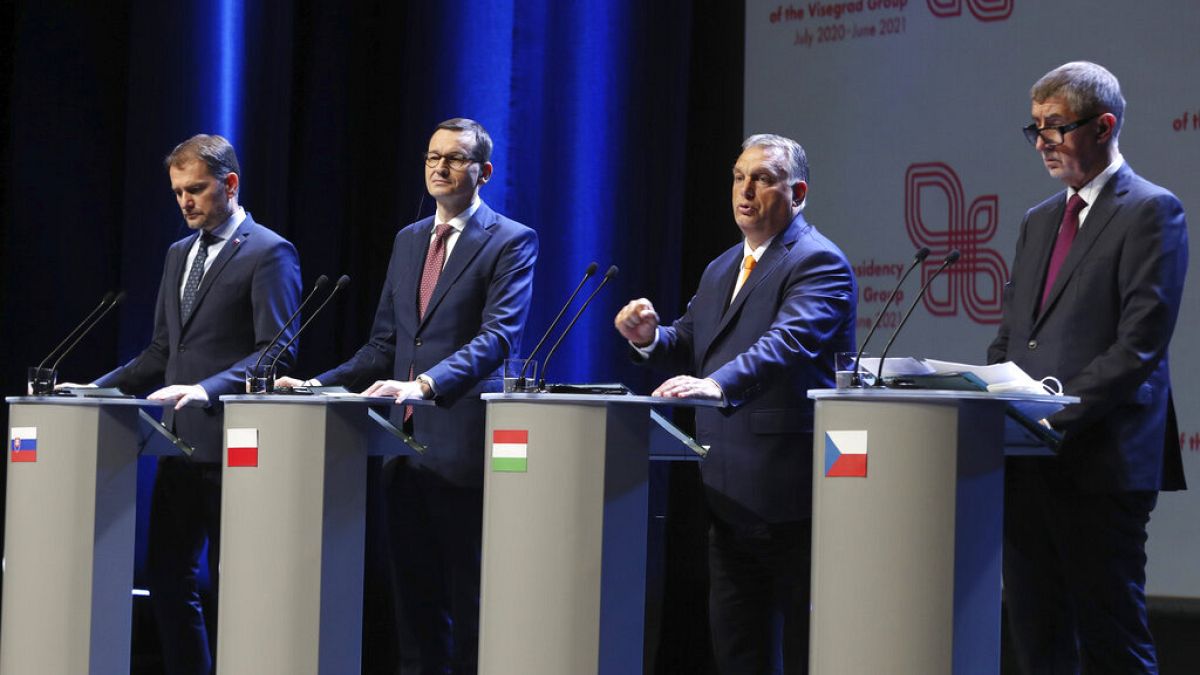"The EU divide between its post-Soviet members and western counterparts has long been its Achilles' heel," says GLOBSEC's chief economist Sona Muzikarova. "Even the pandemic has failed to forge more like-mindedness."
The tricky vaccine diplomacy in Central Europe has just become thornier, as the Czech Republic expels 18 Russian diplomats over the country’s agents’ alleged involvement in the 2014 deadly explosion in a Czech ammunition depot.
The diplomatic relations with Moscow deteriorate just as planned talks with Czech officials over procurement of the Russian COVID-19 vaccine, Sputnik V, were about to take place.
Earlier in March, the unilateral procurement of two million doses of the same, EU-unauthorised vaccine by the Slovak then-prime minister Igor Matovič unleashed an intense political crisis and cost him his seat.
At the beginning of the pandemic, there was real hope that a crisis of unparalleled proportion would propel EU governments to act in unison on key policy objectives in the recovery, with a common vaccination strategy being on the top of the list.
But the EU’s old east-west divide has resurfaced with renewed impetus as Central European states pursue vaccination strategies of their own.
Several Central European governments have opted for mixed inoculation strategies, supplementing EU vaccines with those from China or Russia.
Within the Visegrad region, Hungary has pioneered this mixed strategy, vaccinating with Sputnik V in large numbers. Other central European capitals have either entered talks with Russia or China (the Czech Republic and Poland) or outright purchased their vaccines (Slovakia).
The pursuit of EMA-uncertified vaccines in Central Europe has been driven by a combination of factors.
On top of the quickly deteriorating epidemiological situation, it resulted from failures of national decision-makers to procure EU vaccines early and efficiently in some cases. The EU's own lethargic tempo at competently rolling out its own programme -- using European and US-made vaccines -- has left the Russian and Chinese vaccines appearing as a viable shortcut to much-needed extra doses.
While the region warded off the initial wave of the pandemic gracefully a year ago, it has posted some of the highest death rates worldwide in proportion to populations in the ongoing wave.
According to the latest figures, COVID-19 has claimed the lives of at least 67,073 Poles, 29,213 Czechs, 27,358 Hungarians, and more than 11,647 Slovaks since its arrival.
Some central European leaders said they supported buying vaccines from producers “regardless of geopolitics”. Such schizophrenic vaccine diplomacy ensues amid broader calls for EU "strategic sovereignty", the idea of a stronger, more sovereign Europe inside and out. In the meantime, the approach is wasting domestic political capital in countries like Slovakia, diluting authorities’ focus on saving both lives and livelihoods, and undermining the recovery of the bloc.
Earlier in the pandemic, differences were accentuated when Hungary and Poland blocked the EU's €1.8 trillion budget and recovery deal over moves to make handouts from the fund conditional on a country's respect for rule of law.
The deal was held up for weeks as a direct result of the veto. The disapproval of Budapest and Warsaw of a mechanism to ensure equal respect for core European values ignited serious concerns over whether an agreement can be forged at all.
In the grand scheme of things, the EU did a lot of the heavy-lifting when it comes to redressing its existing toolkit to better fight the pandemic. A prime example constitutes reaching for mutualised debt and moving beyond the "corona bond" taboo. In this sense, the pandemic may have brought Europe closer along the south-north axis, partly erasing differences between the frugal north and profligate south.
With a dated economic model and trapped in the middle-income bracket, Central Europe may consider itself lucky for being such robust beneficiaries of the grants under the EU Recovery and Resilience Facility umbrella, the recovery fund’s main engine. This is true in the face of its relatively small national fiscal stimuli and faltering essential help to individuals and firms.
The Hungarian, Slovak, Czech and Polish economies were among the hardest hit at the pandemic’s onset, with economic losses amounting to -13.7%, -12.1%, -10.8%, -8.0% year on year in the second quarter of 2020 respectively.
The EU divide between its post-Soviet members and western counterparts has long been its Achilles' heel, making the bloc weaker domestically and acting as a liability in the geopolitical terrain. The recent experience that even soaring stakes don’t automatically forge greater like-mindedness should serve as a bottom line in reimagining the "new Europe".
Sona Muzikarova is a chief economist and head of economy and sustainability programme at the central European think-tank, GLOBSEC
